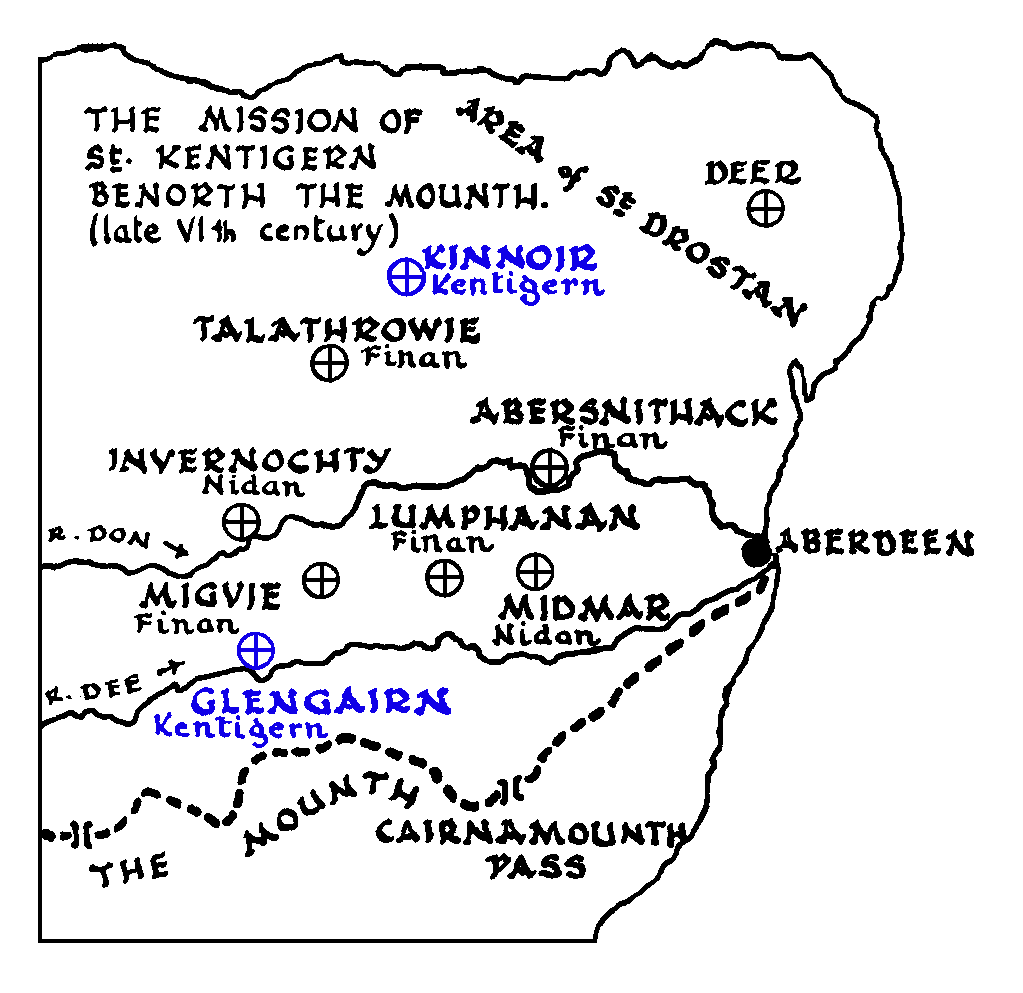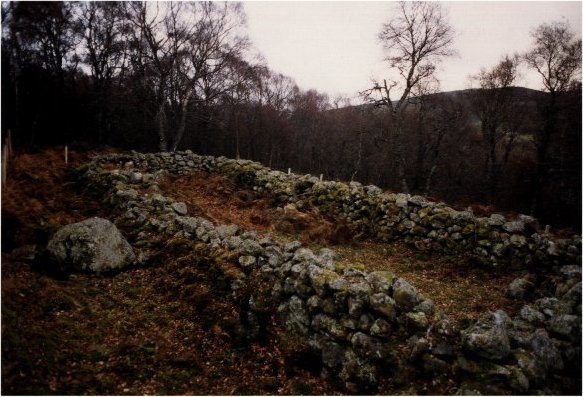St Kentigern
St Kentigern (or Mungo) is better known for his foundation which grew into the modern sprawl that is Glasgow. To part the mists of ancient history the reader must turn to an ancient 'life' of Kentigern written around 1180 by Jocelin, a monk of Furness Abbey in what is now north-west England. Jocelin was obviously using a Celtic text of much greater antiquity as the foundation for his 'life'.
In the ancient annals he is named Conthigerni (meaning "hound-lord") which in later Welsh could give Cyn-deyrn, whence the modern Kentigern has come, presumably through an intermediate Gaelic form Ceanntigearn "chief lord".
St Kentigern is said to have departed from his original foundation on the shores of the Clyde because he feared for his own safety. He is said to have taken flight to Wales but there are many indicators that he took a considerable amount of time over his journey and founded a number of churches along his route through Cumbria. This was not a panic-struck exodus!
After spending a very prosperous time in Wales, St Kentigern is said to have been summoned back to the Britonic kingdom of Strathclyde by Rydderch "the Munificent", the nominal sovereign, who was a Christian man of high standards. Rydderch had recently established a certain supremacy as king by defeating his main opponent Gwenddolew, a pagan chieftain of the lands round the Solloway, at the "blood-fray of Arderydd" - the year was 573AD. Jocelin writes thus:

Above: Churches associated with St Kentigern (in BLUE)
and his 'disciples'.
Kentigern was somewhat reluctant to return from his foundation at Llanelwy in North Wales, the place now known as St Asaph's, but eventually he was persuaded.
"King Rederch, seeing that the Christian religion was entirely destroyed in his kingdom, set himself zealously to restore it. And after long considering the matter in his own mind, and taking advice with other Christians who were in his confidence, he discovered no more helthful plan by which he could bring it to a successful result, than to send messengers to St Kentigern to recall him to his first see."
However, his return journey was punctuated by many "hesitations" as is shown by the significant number of churches he founded as he travelled north. Kentigern brought with him a number of his followers from Wales, some of whom, as we shall see, accompanied him later as he carried the Christian torch into north-east Alba. It was after he had returned to Glasgow, circa 574AD, and after he had taken the immediately necessary steps to reorganise the Church in Strathclyde, that Kentigern returned to the task of continuing the ministry which he had initiated amongst the Picts.
Two of those who accompanied Kentigern on his return to Strathclyde were St Nidan and St Finan. In Anglesey the reader will find Llanfinan and Llanidan (the churches of Finan and Nidan) very close to each other and an old Welsh pedigree suggests that Nidan was Kentigern's cousin. It is obvious that these two peregrins also accompanied Kentigern north on his journey to the Pictish tribes of the province of Mar and their legacy is seen in the foundations bearing their names.

Above: The remains of St Kentigern's church hidden deep in the
birch forests of Glengairn.
small(transp).png)
